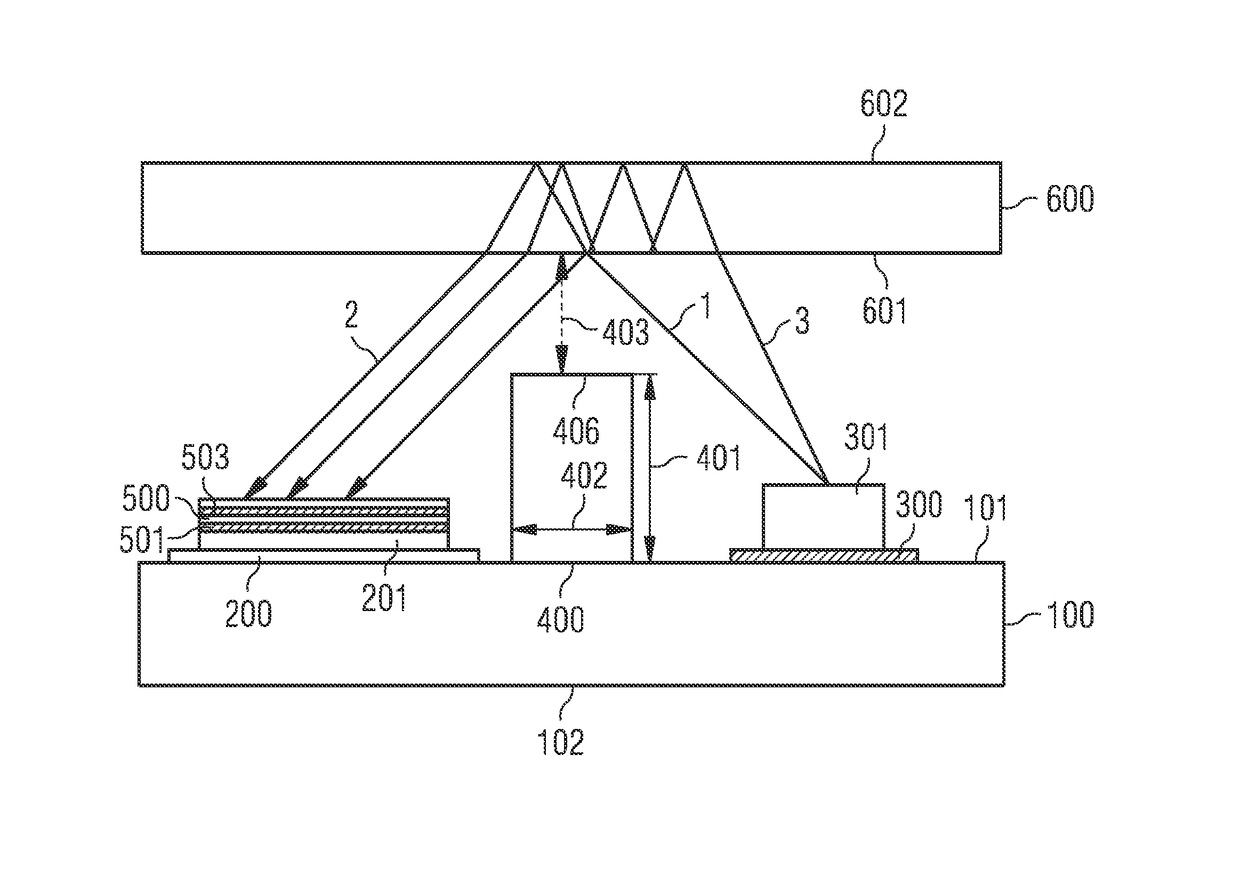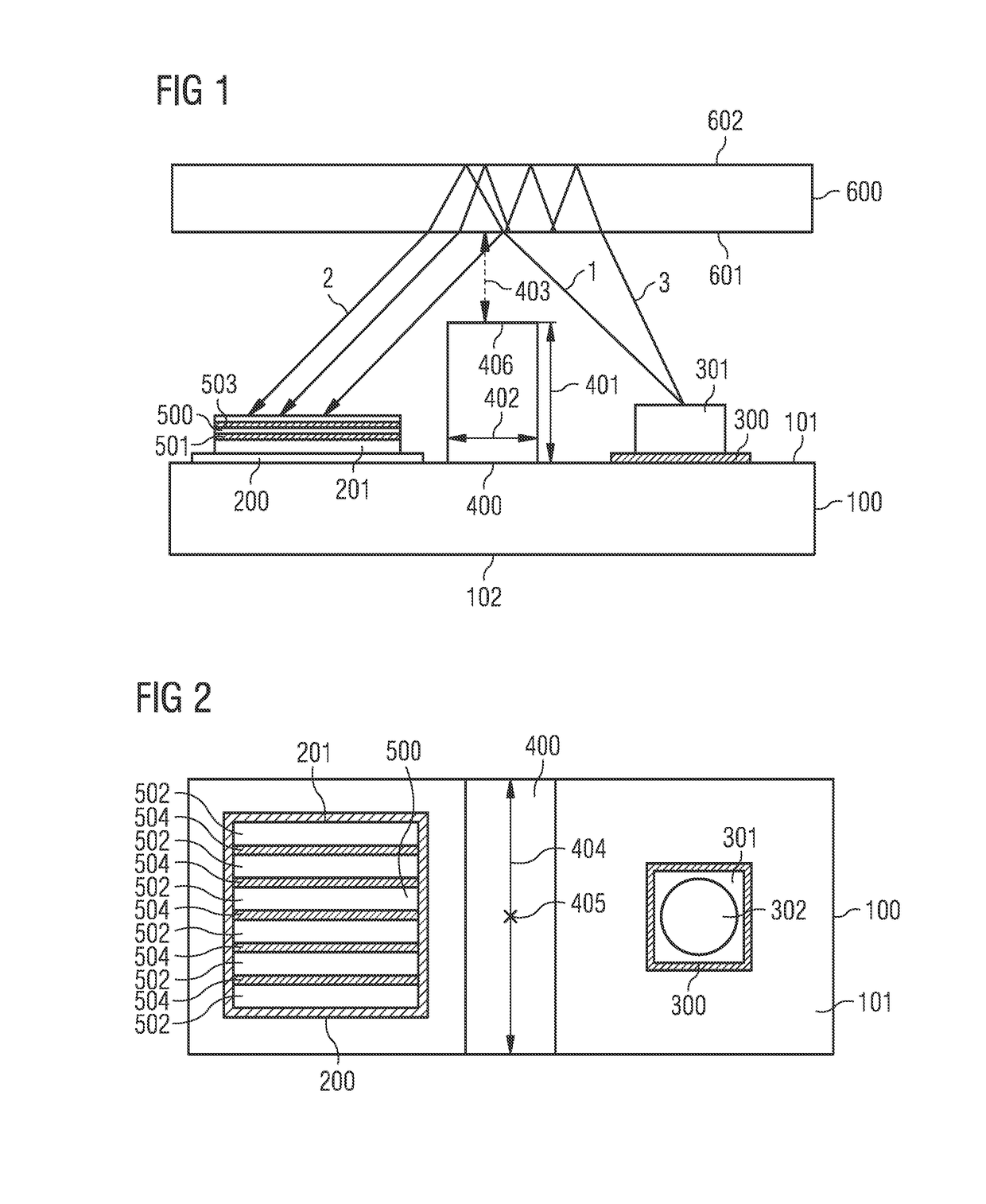Optical proximity sensor arrangement and method for producing an optical proximity sensor arrangement
a technology of optical proximity sensor and optical proximity sensor, which is applied in the direction of wave based measurement system, using reradiation, instruments, etc., can solve the problems of optical crosstalk and still be problematic in the final product, and achieve the effect of improving the signal-to-noise ratio and accuracy of optical proximity detection, reducing the risk of trapped charge, and improving the light gathering and sensitivity of the proximity sensor
- Summary
- Abstract
- Description
- Claims
- Application Information
AI Technical Summary
Benefits of technology
Problems solved by technology
Method used
Image
Examples
Embodiment Construction
[0049]FIG. 1 shows a side view of an embodiment of an optical proximity sensor arrangement.
[0050]The drawing depicts an optical proximity sensor arrangement embedded in a larger device such as a smartphone or tablet. The optical sensor arrangement comprises a substrate 100 having a main surface 101 which extends into an X- and Y-direction. Arranged on the main surface 101 is a first integrated circuit 200, a second integrated circuit 300 and an optical light barrier 400 arranged in between these circuits. Typically, the light barrier 400 is centered with respect to a center point 405 between the first integrated circuit 200 and the second integrated circuit 300 (see FIG. 2).
[0051]The first integrated circuit 200 comprises at least one light sensitive component 201. In this particular embodiment the light sensitive component is a photodiode. The first integrated circuit 200 further comprises terminals (not shown) for electrically connecting the photodiode through the substrate 100. F...
PUM
 Login to View More
Login to View More Abstract
Description
Claims
Application Information
 Login to View More
Login to View More - R&D
- Intellectual Property
- Life Sciences
- Materials
- Tech Scout
- Unparalleled Data Quality
- Higher Quality Content
- 60% Fewer Hallucinations
Browse by: Latest US Patents, China's latest patents, Technical Efficacy Thesaurus, Application Domain, Technology Topic, Popular Technical Reports.
© 2025 PatSnap. All rights reserved.Legal|Privacy policy|Modern Slavery Act Transparency Statement|Sitemap|About US| Contact US: help@patsnap.com



